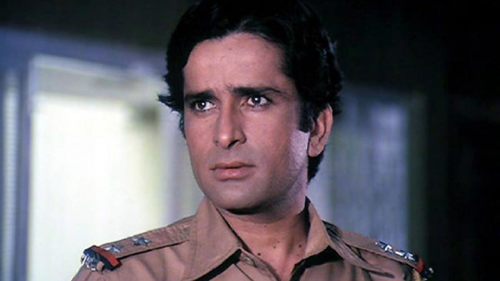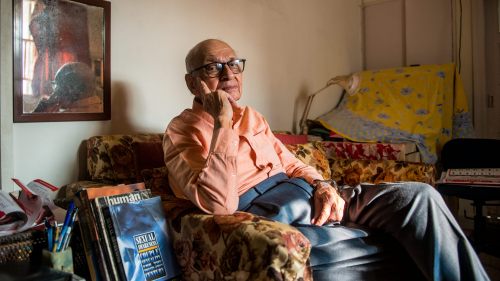A New Low For Indian Censors: Banning “Lady Oriented” Films
Here we go again.
If you’ve been keeping up with stories pertaining to Indian censorship, you’ll know how arbitrarily regressive some of the decisions tend to be. Words are taken out of context or even misheard by the Central Board of Film Certification, leaving producers little choice beyond bowing to their whims. You can catch up on all my articles on the history and progress (or lack thereof) when it comes to censorship here (including my frustrating interview with the head of the CBFC), though something I haven’t yet touched on in detail is the board’s outright refusal to certify, as has recently been the case with Alankrita Shrivastava’s Lipstick Under My Burkha.
It’s a somewhat loaded title for a sexually conservative nation so divided by religious conflict, though only a tad more inflammatory than its Hindi original (Lipstick Ke Sapne, meaning “dreams of lipstick”), because the issue the board seems to have isn’t strictly religious. But don’t take my word for, let’s hear what the CBFC has to say:
And this is the letter from the CBFC. @LipstickMovie #lipstickundermyburkha pic.twitter.com/zNGc6FT5OU
— Alankrita (@alankrita601) February 23, 2017
"Reasons for “Certificate Refused” to the film:
The story is lady oriented, their fantasy above life. There are containious sexual scenes, abusive words, audio pornography, and a bit sensitive touch about one particular section of society. Hence film refused under guidelines 1(a), 2(vii), 2(ix), 2(x), 2(xi), 2(xxi) and 3(i)."
Oh boy.
I’m not one to judge the English skills of somebody who doesn’t speak it natively, but even looking beyond the apparent errors, there’s a fair amount to unpack right from the opening statement: “The story is lady oriented.” No matter what language you speak, that right there sends a very clear message about why a film has been outright banned from cinemas. To give you a clearer picture of what kind of movie it is, here’s a look at the trailer:
If that video doesn't work for you, try this one:
Doesn’t that look delightful? Lipstick Under My Burkha is a tale of the little victories that make up everyday rebellion in a society like India’s, where notions of “culture” and “values” are tied to the suppression and control of female sexuality. With that in mind, the censorship situation takes on an even more sinister connotation.
After Shrivastava’s film was sent to a revising committee to determine its rating, she was called into the darkened theatre and told outright by CBFC head Pahlaj Nihalani that there had been a “unanimous” decision to stop it from being seen theatrically. Despite the film’s success at festivals in Mumbai, Tokyo, Glasgow, and this past week in Miami, a regressive, bigoted government body and the short tempered yes-man at its apex stopped her from sharing her art with the public. Even better, Lipstick won the Oxfam Award for “Best Film on Gender Equality” at the Mumbai Film Festival, mere miles from where Nihalani sits. That’s what the CBFC is inadvertently opposing. Gender equality.
The Central Board of Film Certification is colloquially referred to as the “censor board,” though they insist what they do isn’t censorship. In terms of the process, they inform artists of what they do or don’t deem permissible for public viewing (even for films with an “A” or “Adult” certificate – goodbye Moonlight’s beach scene), and if producers have a problem with this, they can go through the arduous process of appeal after appeal until the decision is made by the courts, often leading to the hemorrhaging of legal fees and a wrench being tossed into the theatrical rollout.
There’s a strange hypocrisy to the board’s censorship that you've probably picked up on by now – and make no mistake, it is censorship no matter how many times Nihalani defaults to the “just doing our job” excuse. Their concern for the “protection of women” leads them to demand words like “bitch” and “whore” be muted regardless of context, but when it comes to women expressing their own stories, fantasies and struggles, they bring down their fascist gavel and ban a movie before insisting it isn’t a ban. I don’t think I need to tell our American readers that when a court needs to reverse a decision like this, it’s a ban no matter how much you deny it.
The problem isn’t limited to the laws, of course. In the year since I wrote about the cultural roots of Indian censorship, the conversation has gotten louder, but it hasn’t really changed. Hell, it wasn’t until I sat down with Nihalani that I learned the laws hadn’t changed either (despite being brought up in Parliament!) because information on the proceedings is harder to come by than it should be. But were the rules to change, it would still only be a first step towards changing how the culture approaches disagreement on art.
Take for instance the set of the upcoming Padmavati, which a local Rajput group trashed before attacking director Sanjay Leela Bhansali over the depiction of the eponymous queen. Not only was this over an anachronism in a film they hadn’t seen (apparently, an intimate scene with ruler Alauddin Khilji, whose obsession with Padmavati is the film’s main focus), but the ahistorical sequence that had them so riled up seems to itself have been a fabrication. According to the director, there is no such scene in the film.
Physical attacks on artists are far from the norm in India, but the “react first, be informed later” mindset that leads to this violence is still the status quo. The idea that all art needs to be agreeable, inoffensive and in line with the abstract notions of “culture” creates an intellectual vacuum, one that exists symbiotically with the CBFC and the Cinematograph Act of 1952. Both of these things are in need of radical revamp, as is the hypocrisy surrounding the “protection” of women from subjects concerning their experience, especially when it’s their voices being suppressed in the process. If that’s the case, women aren’t the ones these laws protect. The only things being “protected” are the fragile egos of men who can’t deal with female autonomy, and a culture that refuses to be challenged by a more inclusive society.
In the director’s own words:
"Shouldn’t the voices of women be encouraged and given more space? Instead we have a situation where a small film that dares to tell a story from a female point of view is being silenced. We are being told that our voices do not matter. We are being told it is better to shut up and comply.
As a woman, and as a filmmaker, I have decided that I will not shut up. I refuse to be silenced. I will not be discouraged. I will fight to ensure that Lipstick Under My Burkha is released in cinemas in India. And I will continue to make “lady-oriented” films as long as I can."
Now that we're here, let's keep the discussion "lady oriented." What are your favourite films by and/or about women? What experiences or perspectives do they articulate? Sound off below, completely uncensored. We'll let you know if and when Lipstick Under My Burkha makes it to Indian cinemas.



